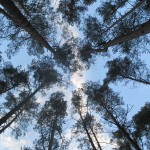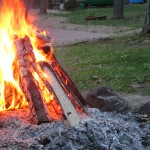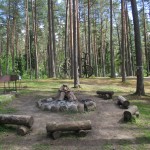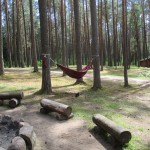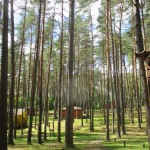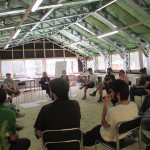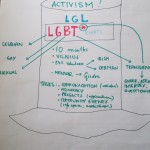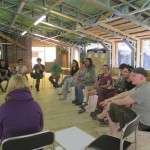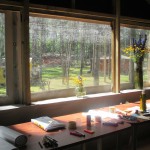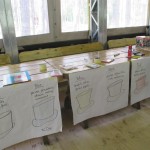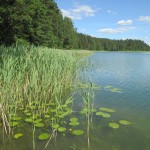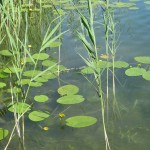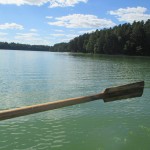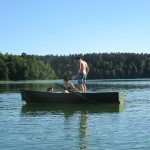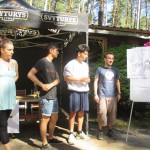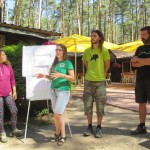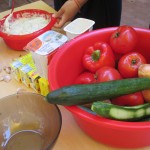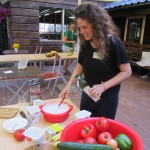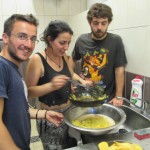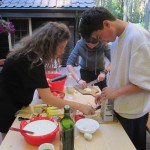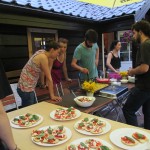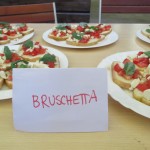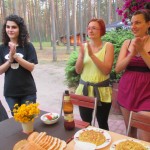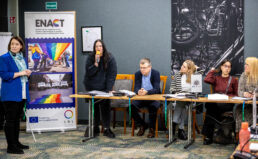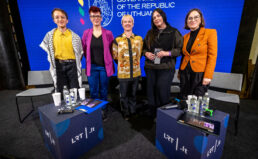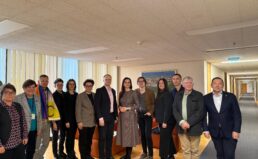From the 30th of June to the 4th of July, as part of the European Voluntary Service program, I had the opportunity to participate to the mid-training, a training specifically focused on the mid-term evaluation and the assessment of the EVS experience.
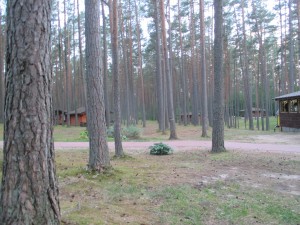 The training took place in the scenic location of Asveja, a beautiful place in the Molėtai district, one hour far away from the city of Vilnius. Participants slept in cozy wooden houses surrounded by forest pines and green. Not far away from that, the relaxing lake of Asveja represented the ideal opportunity to have some quality time when the daily sessions of work were over.
The training took place in the scenic location of Asveja, a beautiful place in the Molėtai district, one hour far away from the city of Vilnius. Participants slept in cozy wooden houses surrounded by forest pines and green. Not far away from that, the relaxing lake of Asveja represented the ideal opportunity to have some quality time when the daily sessions of work were over.
If the on-arrival training had the goal to introduce EVS volunteers to the host country, prepare them for the service period and the general EVS experience, the mid-term one is more focused on the volunteers’ projects, on the cultural and personal challenges faced during the previous months, and least but not last, on future perspectives. It is indeed a moment of general reflection on the undertaken path, on the skills acquired so far and those still belonging to the ongoing learning process of every participant’s own EVS experience. To me, this mid-training represented a way to make an assessment of my own initial personal goals and to observe how these sometimes were achieved, while other times instead evolved or changed in my list of personal priorities.
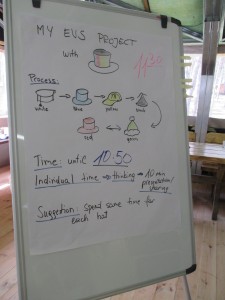 Non-formal education activities were used as an instrument to reflect both individually and collectively on the volunteers’ path and learning process. In particular, several techniques of creative thinking were applied in order to reflect in a comprehensive way on volunteers’ projects. I was particularly impressed by the method of the “six thinking hats”, a tool elaborated by the father of lateral thinking Edward De Bono. In this exercise, participants had to represent graphically six hats of different colors which were referring to the different aspects of their own project: the white hat represented the main information related to the project, the yellow one the strength points of the project and the positive benefits it generated on participants, the black one referred to judgements, issues and complications, the red one to feelings and emotions towards the project, the green hat took into consideration the creativity and the possibilities that the project opens up to participants and finally the last hat, the blue one, symbolized the whole thinking mechanism process. What I appreciated of this exercise, was that the method allowed to take a comprehensive look to one’s own project and avoids at the same time the often recurring instinct to focus on a single aspect of the project.
Non-formal education activities were used as an instrument to reflect both individually and collectively on the volunteers’ path and learning process. In particular, several techniques of creative thinking were applied in order to reflect in a comprehensive way on volunteers’ projects. I was particularly impressed by the method of the “six thinking hats”, a tool elaborated by the father of lateral thinking Edward De Bono. In this exercise, participants had to represent graphically six hats of different colors which were referring to the different aspects of their own project: the white hat represented the main information related to the project, the yellow one the strength points of the project and the positive benefits it generated on participants, the black one referred to judgements, issues and complications, the red one to feelings and emotions towards the project, the green hat took into consideration the creativity and the possibilities that the project opens up to participants and finally the last hat, the blue one, symbolized the whole thinking mechanism process. What I appreciated of this exercise, was that the method allowed to take a comprehensive look to one’s own project and avoids at the same time the often recurring instinct to focus on a single aspect of the project.
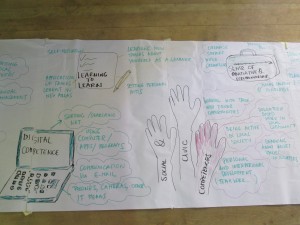 Particular attention inside the mainstream of activities, was given to the compilation of the YouthPass, a European recognition tool for non-formal and informal learning in youth work. Participants to the training were asked to reflect on the skills (communication in mother tongue, communication in foreign languages, mathematical competence and basic competence in science and technology, digital competence, social and civic competence, sense of initiative and entrepreneurship, cultural awareness and expression) acquired at that point of the training and on the strategies to develop those not acquired yet.
Particular attention inside the mainstream of activities, was given to the compilation of the YouthPass, a European recognition tool for non-formal and informal learning in youth work. Participants to the training were asked to reflect on the skills (communication in mother tongue, communication in foreign languages, mathematical competence and basic competence in science and technology, digital competence, social and civic competence, sense of initiative and entrepreneurship, cultural awareness and expression) acquired at that point of the training and on the strategies to develop those not acquired yet.
However, this mid-term training was not only an opportunity to learn and to define one’s learning process, but also an opportunity for sharing: sharing emotions, opinions, problems, experiences and cultural differences. Through its activities, the training permitted volunteers to get to know each other, build networks and collaborate. For instance, problem-solving was faced trough different initiatives, involving for instance small groups of people gathering to solve a participant’s personal dilemma.
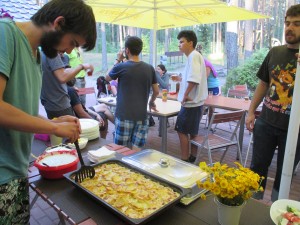 Collaboration among volunteers was fostered instead through recreational activities where team-building was highly encouraged. My favorite activity was surely the realization of an international dinner the last night of the training. Each team (established according to the nationality of its participants) had to prepare a special dish typical of the represented country. At the end of the culinary creation process, the dining table was a collection of delights from all over Europe. To cite only few of these memorable dishes, a special mention must be given to the Spanish tortillas and salmorejo, to the French gratin dauphinois, to the greek tzatziki and salad, and obviously (but most of all, modestly), to the Italian bruschette and tiramisu.
Collaboration among volunteers was fostered instead through recreational activities where team-building was highly encouraged. My favorite activity was surely the realization of an international dinner the last night of the training. Each team (established according to the nationality of its participants) had to prepare a special dish typical of the represented country. At the end of the culinary creation process, the dining table was a collection of delights from all over Europe. To cite only few of these memorable dishes, a special mention must be given to the Spanish tortillas and salmorejo, to the French gratin dauphinois, to the greek tzatziki and salad, and obviously (but most of all, modestly), to the Italian bruschette and tiramisu.
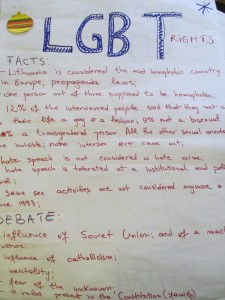 However, from an LGBT*-activist point of view, this mid-term training was also an opportunity to raise awareness on some LGBT*-related topics. Since I was the only volunteer working in the LGBT*-rights field, this captured much of attention. Plus, since not many participants were aware of the difficult situation for LGBT* people in Lithuania, many questions were asked. Actually, so many were the questions coming up, that I was asked to do a workshop on the topic in the framework of an open space for activities and small seminars. And so I did: the workshop gathered some volunteers interested in the topic and fostered an interesting comparative debate on the situation of LGBT* people in different countries and on the many challenges faced by LGBT*-people in Lithuania.
However, from an LGBT*-activist point of view, this mid-term training was also an opportunity to raise awareness on some LGBT*-related topics. Since I was the only volunteer working in the LGBT*-rights field, this captured much of attention. Plus, since not many participants were aware of the difficult situation for LGBT* people in Lithuania, many questions were asked. Actually, so many were the questions coming up, that I was asked to do a workshop on the topic in the framework of an open space for activities and small seminars. And so I did: the workshop gathered some volunteers interested in the topic and fostered an interesting comparative debate on the situation of LGBT* people in different countries and on the many challenges faced by LGBT*-people in Lithuania.
When the training terminated, what I brought back to Vilnius was a general feeling of wellness, given by the many nice people met and by the interesting activities realized during the training. If this was a goal of the training, it was definitely achieved.
Article and photos by LGL’s EVS volunteer Alice Michelini
Cover photo by Simina S.
 LGL is carrying out the 10 month project “Promoting Human Rights Activism in Lithuania” under the Erasmus+ programmeEVS (European Voluntary Service).
LGL is carrying out the 10 month project “Promoting Human Rights Activism in Lithuania” under the Erasmus+ programmeEVS (European Voluntary Service).


